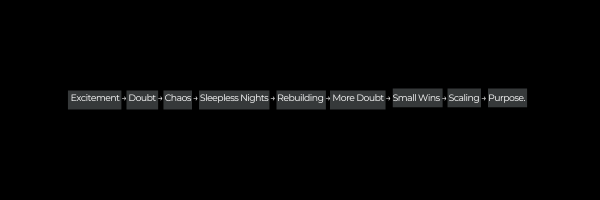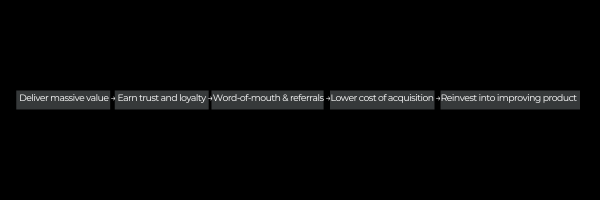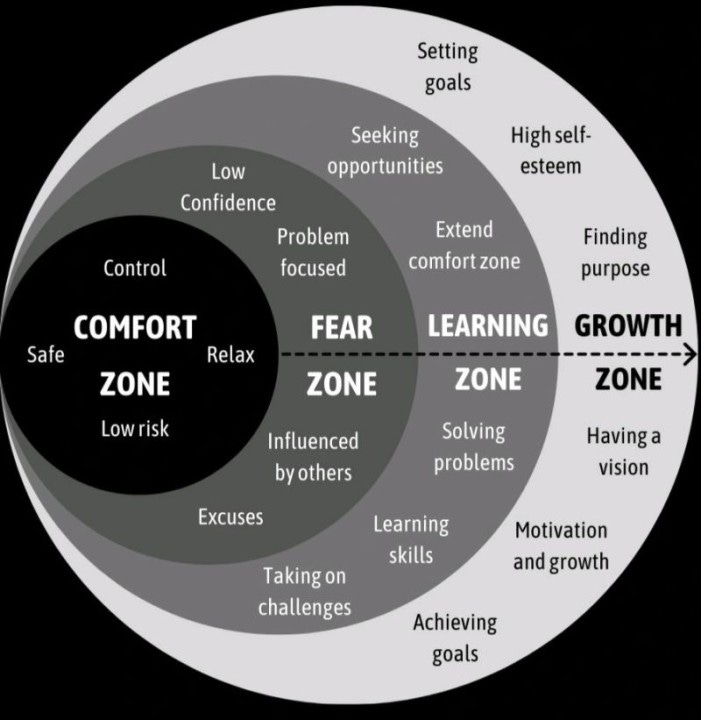How to Build a Startup: The Path from Idea to Impact
A Step-by-Step Guide to Turning Your Vision into a Thriving Business
Why Most Startups Die Before They Live
Every year, millions of people say the same thing:
I have an idea.
But ideas are cheap. They’re everywhere. The graveyards are full of brilliant ones.
What kills startups isn’t the idea—it’s the gap between what founders think building a company is, and what it really is.
Most see it as a straight line:
Idea → Build → Launch → Success.
But in reality, the path looks more like this:
Most never make it past the middle swamp—that brutal stage where comfort is gone, fear is high, and nothing seems to work. This is why you need a framework. A map. A way to walk the path without losing yourself.
Vision without action is a daydream. Action without vision is a nightmare.
Your startup needs both.
The Four Startup Zones
Just like personal growth, building a startup moves through zones. You can’t skip them. You can’t rush them. Each zone has a test you must pass.
1. Comfort Zone → The Idea Stage
It feels safe. Talking about your idea. Writing in your notebook. Building wireframes no one sees. But the comfort zone is a trap. It tricks you into thinking you’re moving forward while you’re really circling.
How to break it:
Admit that your idea is worthless until it meets the real world. Build a Minimum Viable Test (MVT), not just an MVP. A landing page, a fake demo, a prototype with duct tape—something real people can react to.
Progress comes from small, continuous action. Don’t aim for perfect. Aim for movement.
Framework: The Validation Sprint
Write your idea in one sentence.
Build the cheapest test possible (landing page, survey, clickable mockup).
Put it in front of 10 strangers (not friends).
If no one cares, pivot or kill it.
Before You Build It… Make Sure They Actually Want It
Too many great founders waste months (or years) building products no one asked for. Don’t be one of them.
Grab your free copy of the Idea Validation Manual — a proven step-by-step playbook to test your startup idea before you waste time, money, or energy.
Inside, you'll learn how to:
Turn vague ideas into clear, testable concepts
Find and talk to the right early customers
Validate demand without building a full product
Spot red flags early and pivot with clarity
Make confident, data-informed decisions from day one
This isn’t startup theory — it’s a practical, system inspired by real-world launches and lean startup principles. Whether you're still brainstorming or already building, this manual helps you answer the question:
“Is this worth building?”
Because if you can't validate the idea, you can’t build the business.
Grab a Free copy here now and take the guesswork out of your startup journey.
2. Fear Zone → The Launch Stage
Step out of comfort, and fear shows up.
What if nobody buys?
What if people laugh at me?
What if I fail publicly?
This is where most quit. But here’s the truth: fear is the tuition fee for entrepreneurship. If you’re scared, it means you’re on the right path.
Fear is only as deep as the mind allows.
How to break it:
Launch ugly. Your version 1 should make you cringe in a year. Share your product loudly, even if it feels uncomfortable. Focus on one metric that matters—not vanity likes or followers, but sales, signups, or usage.
Framework: The Fear Zone Checklist
Did you ship something live this week?
Did you ask strangers for feedback?
Did you get one paying user?
If the answer is “no” to all three, you’re still hiding in comfort.
3. Learning Zone → The Chaos Stage
Push past fear, and reality sets in. Your product breaks. Customers churn. Your marketing fails. This is the learning zone. It’s brutal. But it’s also where founders are made. Every mistake teaches you something no book can.
Fall seven times, rise eight.
How to break it:
Measure, don’t guess. Data tells you the truth emotions hide. Surround yourself with mentors, peers, or a founder community. Lone wolves burn out. Document your mistakes. What you write down, you don’t repeat.
Framework: The Feedback Loop
Repeat this loop until you find traction.
4. Growth Zone → The Scaling Stage
This is where success lives. You’ve validated, survived chaos, and now your system works. But here’s the secret: growth isn’t about more money, it’s about building a machine that runs without you.
The carpenter who builds for himself is skilled. The one who builds for others is a master.
How to break it:
Build systems, not just hustle. SOPs, automations, processes. Hire slow, fire fast. Your team defines your culture. Invest in brand, not just product. Products get copied. Brands don’t.
Framework: The Growth Flywheel
The Truth About Startups
Every founder wants shortcuts. But the truth is: there are none. You can’t skip comfort. You can’t bypass fear. You can’t avoid mistakes. The journey itself is the filter. It weeds out those who just want applause from those who are willing to suffer for impact.
The way is in training.
Building a startup isn’t about one big win. It’s about showing up every day, bleeding a little, and refusing to quit.
Takeaways
Kill the fantasy: Your idea is worthless until tested.
Launch small and ugly: Fear is the tax. Pay it.
Embrace chaos: Mistakes = tuition.
Build systems: Growth = freedom, not just money.
Stay on the grind: Success is uncomfortable by design.
Ready to Stand Out and Own Your Niche?
You’re not here to play small — you’re building something that matters. But in today’s noisy market, even great ideas get ignored when your brand lacks clarity.
Download “Become the Go-To Brand” a practical framework to:
Nail your niche and clearly communicate your value
Craft a bold POV that sets you apart from the noise
Turn your expertise into offers people actually want
Build authority with content that earns trust
Show up with consistency — so your message sticks
These are the same strategies used by brands like Notion, Calendly, and Basecamp — now adapted to your business, with step-by-step tools and templates to help you dominate your niche.
Grab your copy here
Final Word
The comfort zone feels safe. The fear zone feels impossible. The learning zone feels humiliating. But the growth zone feels like freedom.
You can’t skip the path. You can only walk it.
The question is:
Which zone are you in today?
And what’s your next step forward?
P.S. Every successful startup begins with one small step, don't wait for perfect, just start building.
-Barry







